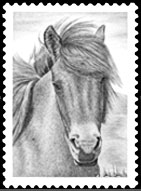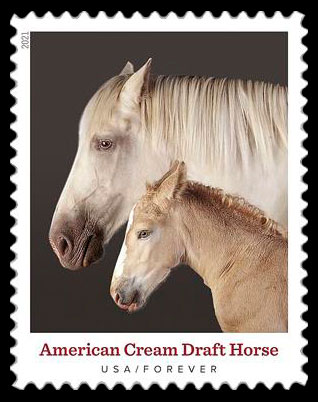
On May 17, 2021, the United States Post issued a series of stamps featuring farm animal breeds that could be considered national treasures.
The series consists of 10 postage stamps depicting farm animals and birds - traditional breeds, formerly widespread in America but now almost extinct. The national heritage list includes: the Mulefoot Hog, Wyandotte Chicken, Milking Devon Cow, Narragansett Turkey, American Mammoth Jackstock Donkey, Cotton Patch goose, San Clemente Island Goat, American Cream Draft Horse, Cayuga Duck and Barbados Blackbelly Sheep.
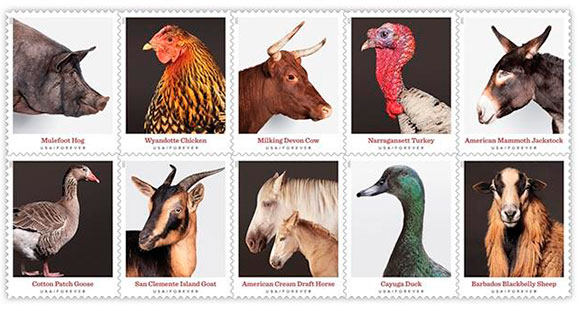
With the industrialization of agriculture in the United States, several main breeds of farm animals and birds were selected to maximize the productivity of livestock and poultry. But this path led to other breeds, perhaps less productive, but at the same time possessing interesting and even unique qualities, to the verge of extinction. A deliberate process of conservation and restoration of traditional pre-industrial breeds is currently underway by some farmers and breeders. Traditional breeds not only exhibit genetic diversity, but are also carry historical and cultural heritage. They exemplify livestock traditions and farming practices, and provide an opportunity for everyone to gain a more authentic insight into rural America's past.
The American Cream Draft Horse is one of these endangered breeds. The American Cream is the only heavy draft breed developed in the U.S. The breed originated from a heavy draft mare with an original cream color. Old Granny, the grandmother of the new breed, was bought by stock dealer Harry Luckin at a Story County, Iowa auction in 1911. All her foals had an unusual cream color, and several breeders from Iowa became interested in the horses of this line and began to conduct targeted breeding. In 1944, the American Cream Association was established and in 1950, the breed of American Cream Heavy Draft was officially registered. At that time the number of horses was just over 200 heads and their popularity continued to grow. However subsequent mass mechanization of agriculture almost put an end to the breed. It wasn't until the late 1970s that a group of enthusiasts led by Richard Eads and Arnold Hockett attempted to revive the American Cream Horse. In 1982, the studbook was restored and the registration of horses began with full compliance to breed standards. However today, despite all efforts, the total number of American cream horses does not exceed 500 heads.
A distinctive feature, as the name suggests, is a creamy color, snow-white mane and tail, and amber-colored eyes. In terms of their profile, horses of this breed are similar to medium-sized heavy drafts. They have a medium-sized head with a wide forehead and small pointed ears, a short, well-set neck, short body, strong back, and strong legs with small, neat hooves.
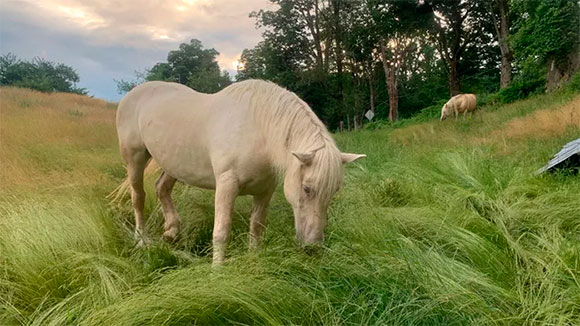
The postage stamp series was created by USPS Art Director Greg Breeding, designer Zack Bryant and photographer Aliza Eliazarov. Aliza Eliazarov is well known for her photographs of farm animals. She has featured in major publications such as The Atlantic, The Washington Post, New Republic and Food & Wine, and her photographs often appear on the covers of Modern Farmer magazine. When the US Postal Service invited Aliza to join the project, she happily agreed.
Aliza takes a very responsible approach to photography, initially looking for a farmer who has not only the required animals, but also interesting stories about them. The photographer liaises with the owners of the animals and gets acquainted with potential four-legged and feathered models. Photography sessions can take a long time because animals are unpredictable and you can wait a long time for the right angle, but the opportunity for a good shot can last only a moment.
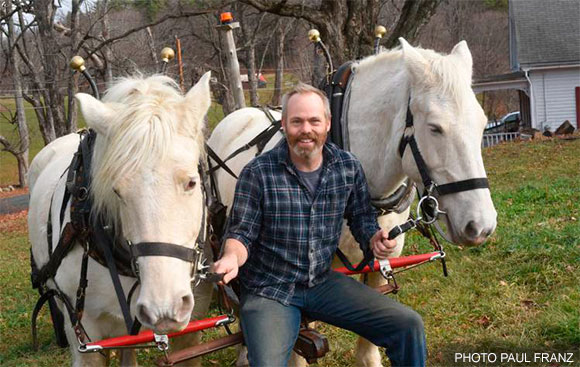
Photos of American Cream Horses, which were then reproduced on the stamps, were taken by Aliza Eliazarov at Haywood and Father Farm in a suburb of Ashfield, Massachusetts. Farmer Roy Nilsson, who has been breeding American Cream horses since 2003, was pleased to take part in the project. Portraits of his horses, Molly, the mare, and Shepherd, the foal, have been displayed around the world on postage stamps.
Перейти в каталог
